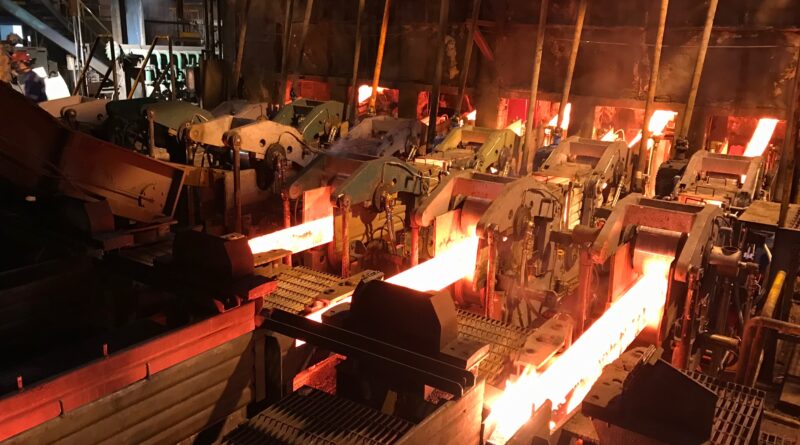BHP economic outlook for steel and associated commodities
As in the macroeconomic sphere, the deployment of vaccines in key economies, albeit with some uncertainty as to timing and efficacy, removes a material amount of downside risk to the short term demand and price outlook for our portfolio commodities. With Chinese demand looking robust and the rest of the world (ROW) on an improving trajectory, a precondition for maintaining robust price performance is in place. Where the price recovery is more nascent, there is potential for a further uplift.
Global crude steel production was unbalanced in the 2020 calendar year, with strong growth in China offset by a steep fall in ROW. We note the momentum in ROW has been picking up markedly, with average utilisation rates now close to pre-COVID levels, while margins are benefiting from higher prices. In the 2021 calendar year, we anticipate a continuation of strong end-use demand conditions in China and ongoing recovery in the rest of world. Over the long-term, we anticipate that global steel production will expand at a similar rate to population growth in coming decades, with a plateau and then slow decline in China offset by growth in the developing world, led by India. Growth in pig iron is expected to trail the growth in steel, principally reflecting the higher long-term proportion of steel sourced from scrap. Efforts to decarbonise steel making are expected to proceed at different rates in different regions, based on availability of lower carbon raw feedstock (including but not exclusively scrap), the age of existing facilities, variable levels of policy support, net trade positions and differential demands for affordable steel.
Iron ore prices have been elevated since the Brumadinho tailings dam tragedy in Brazil first disrupted the market in early 2019. Conditions were particularly tight in the second half of the 2020 calendar year. The combined impact of very strong Chinese pig iron production and Brazilian exports being unable to lift materially from depressed levels in the 2019 calendar year outweighed record shipments from Australia. Our analysis indicates that before prices can correct meaningfully from their current high levels, one or both of the Chinese demand/Brazilian supply factors will need to change materially. In the second half of the 2020s, China’s demand for iron ore is expected to be lower than today as crude steel production plateaus and the scrap-to-steel ratio rises. In the long-term, prices are expected to be determined by high cost production, on a value-in-use adjusted basis, from Australia or Brazil. Quality differentiation is expected to remain a factor in determining iron ore prices.
Metallurgical coal prices faced by Australian producers in the free-on-board (FOB) market have been weak. A steep, COVID-19 induced decline in ROW demand, which normally comprises around four-fifths of the seaborne trade, was the major factor driving lower prices for much of the 2020 calendar year, with China serving as the effective clearing market. However, late in the 2020 calendar year, these positions reversed, with ROW demand beginning to improve, while uncertainty about China’s import policy towards Australian coals spiked. Trade flows are adjusting to account for the available opportunities. The industry faces a difficult and uncertain period ahead. Long term, we believe that a wholesale shift away from blast furnace steel making, which depends on metallurgical coal, is still decades in the future. That assessment is based on our bottom-up analysis of likely regional steel decarbonisation pathways, as discussed above. Demand for seaborne Hard Coking Coals (HCC) is expected to grow alongside the growth of the steel industry in HCC importing countries such as India. There is a developing mismatch between the expected evolution of customer demand and the cost-competitive growth options available to producers, which are skewed towards lower quality coals. As a result, we view the medium to long-term fundamentals for higher quality metallurgical coals as attractive.
Energy coal prices recovered from their COVID-19 induced lows late in the 2020 calendar year, assisted by a pick-up in demand due to cold weather in North Asia and a bounce in Indian industrial activity. China’s policy in respect of energy coal imports remains a key uncertainty.




